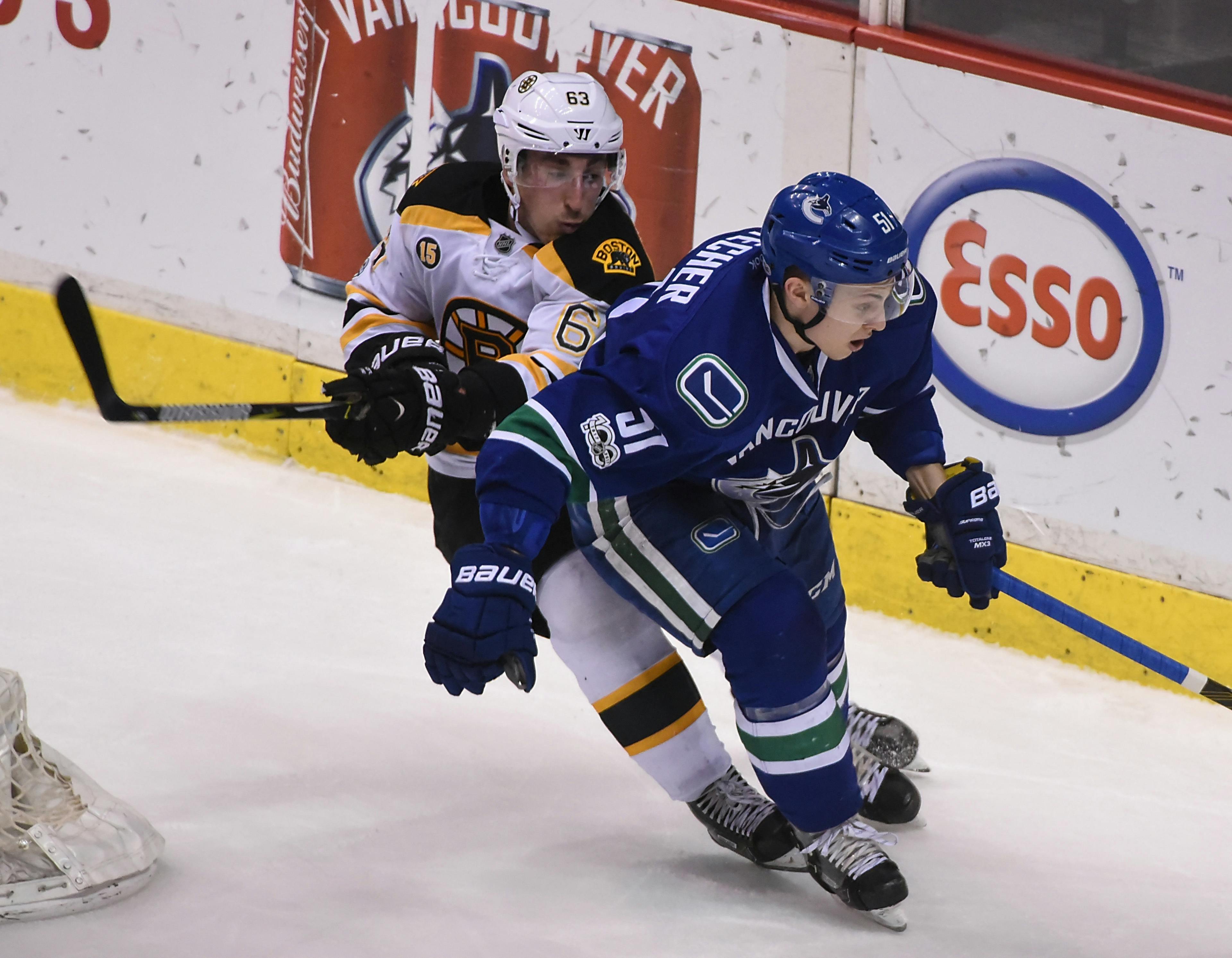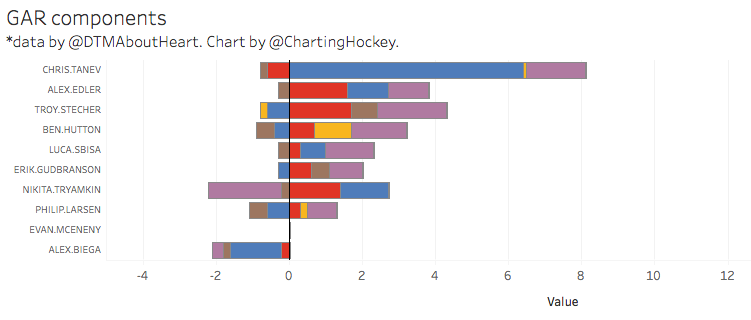Canucks Army Year in Review: Troy Stecher

By J.D. Burke
6 years agoI think most who follow the Canucks would have been willing to consider Troy Stecher’s first season in the organization a success had he finished it with a few NHL games under his belt. Safe to say Stecher had designs on something a little better.
Stecher, 23-years-old, forced his way onto a roster that hadn’t the space for him to play, for a coach who at times, it seemed, didn’t want him. When he finally got there, he was like a dog with his bone — completely unwilling to let go, even for a second.
It’s not the size of the dog in the fight, so much as the fight in the dog right? A generously listed 5’10”, Stecher held his own in a role usually reserved for the NHL’s alpha males.
As Chris Tanev’s lower-body injuries opened a spot alongside Alexander Edler on the Canucks’ top pair, Stecher stepped into the void. It was baptism by fire. The pair played the toughest minutes of any Canucks’ defenders and, mostly, held their own. With Stecher and Edler on the ice, the Canucks controlled 48.8% of five-on-five shot attempts.

At a glance, it’s hard to tell who was the chief beneficiary of their relationship. I would tend to lean towards Edler, who has years of experience and a slight advantage in impacting Stecher’s ability to control play at even strength to his advantage.
Interestingly enough, if we’re to use DTMAboutHeart’s GAR (Goals Above Replacement) statistic, it shows the two as having an identical impact of an added three-and-a-half goals to the Canucks’ this season. A metric like GAR aims to act as a statistic which encompasses most everything a player does to provide a composite score of how many goals they add over a replacement level player over the course of the season.


Regardless of who is the superior member of that pair, I think we shouldn’t lose track of how big a boon it is for the Canucks’ organization that we can even have this conversation. There’s a very real case for Stecher as one of if not the best defender on the Canucks’ blue line.
Failed to load video.
And for everything Stecher accomplished at even strength, he was a welcome revelation on a power play in desperate need of help from the back end. Of Stecher’s 24 points, eight were put up with the man advantage. The Canucks as a whole attempted more unblocked shot attempts with Stecher on the ice too, which suggests he had a positive impact on their ability to create sustained offence too.
One area where Stecher struggled, perhaps unsurprisingly, is in the quality of shots the Canucks surrendered when he was on the ice. That his defensive GAR impact was relatively negative made me curious as to how a player with a positive overall impact could struggle so noticeably in this area.

As it turns out, the Canucks’ opponents effectively held a timeshare from the most dangerous parts of Vancouver’s defensive zone with the visitors changing hands from game-to-game but never leaving the suite vacant. Stecher’s going to need to find a way to limit opposition chances to take that next step.
That’s nitpicking, though. At this stage, we can say with a degree of confidence that Stecher can survive in a top pair role. This, just a year after the Canucks signed him for nought but the cost of his contract as an undrafted free agent.
Recent articles from J.D. Burke




